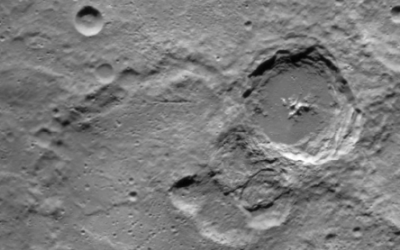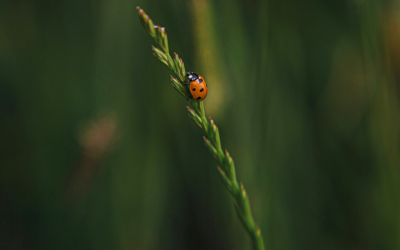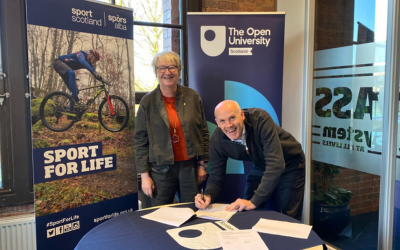PhD researcher names Mercury crater after Scottish poet

Open University PhD researcher Annie Lennox has named a crater on Mercury after the 17th century Scottish poet and songwriter Lady Carolina Nairne.
The crater was found during Annie’s research alongside a team of other OU researchers to map the surface of Mercury ahead of the BepiColombo spacecraft completing its orbit.
The crater will shortly appear on NASA’s official list of craters.
 As we mark International Day of Women and Girls in Science today (11 February), Annie, born in Portsoy, Aberdeenshire, shares with us her thought process behind the name, Nairne.
As we mark International Day of Women and Girls in Science today (11 February), Annie, born in Portsoy, Aberdeenshire, shares with us her thought process behind the name, Nairne.
The BepiColombo spacecraft mission is a joint project by the European and Japanese space agencies. Two science orbiters are taking complementary orbits around Mercury to study all aspects of the mysterious inner planet to better understand its origin and evolution.
Annie is geologically mapping the South Pole of Mercury in preparation for the mission entering stable orbit in 2025. She discovered the new crater, which is around 50km in diameter.
On first seeing the crater, Annie said:
“The spectral colour and shape of this crater is so distinctive; it immediately caught my eye. It’s situated in a region of Mercury that was only recently imaged, which before the mission, had never been seen in sunlight.
“I discovered the crater had unique features, called lobate ejecta deposits, that I am currently researching, with the hope that better understanding them will reveal insights into what controls a crater’s shape.”
As Annie was the first to find the crater, she was allowed to name it. All the craters on Mercury are named after world-renowned musicians and artists, who were famous for at least three years and deceased for 50.
Annie submitted a couple of potential names to the International Astronomical Union, before getting Nairne accepted.
She chose the name after the Scottish poet and songwriter, Lady Carolina Nairne, following a lifelong love of her art. Aside from her planetary science work, Annie is also an accomplished Scottish harpist and singer. She commented:
“I found out about Lady Nairne through my singing. Many of the songs I learnt in early childhood and at school were composed by her.
It’s a real honour to have named a crater! I can’t get my head round that it will forever be called Nairne and I was responsible for that. I am so proud to have put a Scottish woman in space.”
“I didn’t realise how many songs I knew of hers until I started researching her as a candidate for naming the crater. Her songs still influence the Scottish music scene today.”
The majority of craters on Mercury are named after men. Annie wanted to make sure that more of the craters were named after women, hence why she pushed for Nairne:
“It was important to me to name the crater after a woman, as Mercury is currently a male-dominated planet. It also felt like poetic irony to name the crater after a woman whose work was, in her lifetime, mistakenly accredited to a man.”
The Nairne crater will shortly appear on the International Astronomical Union database, where it will become part of the permanent record of Mercury’s craters.
Annie added: “It’s a real honour to have named a crater! I can’t get my head round that it will forever be called Nairne and I was responsible for that.
“I am so proud to have put a Scottish woman in space. Scottish music has played such a big part in my life – it’s a homage to my Scottish roots.
“With women still underrepresented in science, technology, engineering, and mathematics, I also believe that it’s my duty as a member of the planetary science community to represent the underrepresented and to make it a more diverse place.”
News
Media contacts
Media enquiries
OU in Scotland Media Relations:
Call 0131 549 7932
OU UK Press Office:
Call 01908 654316
Out-of-hours:
07901 515 891
Visit our OU UK news site

